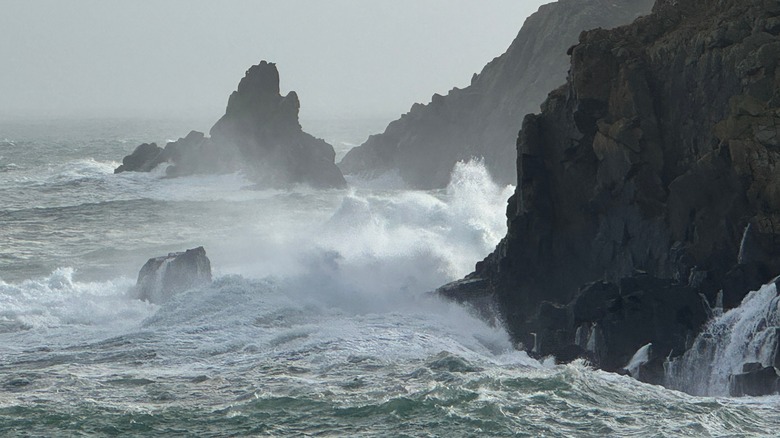Satellites Recorded This Record Breaking 20-Meter High Wave From Space
Some of the most tragic disasters are caused by major disturbances like hurricanes, severe thunderstorms, and blizzards, but there are even more treacherous hazards at sea. In fact, some of the most chaotic oceanic effects originate from storms far out on the open water, and a recent scientific study is an eye-opening reminder of just how brutal Mother Nature can be.
On December 21, 2024, a powerful mid-ocean storm (referred to by researchers as Storm Eddie) was raging through the Atlantic, and space-bound satellites operated by the European Space Agency captured some surprising data — specifically, wave heights averaging around 19.7 meters (about 65 feet). These are the largest waves ever measured from space, and the largest storm in terms of wave height over the past decade. And though earthquakes and tsunamis might be even more dangerous than previously thought, the waves created by Eddie are surprisingly comparable to the latter. Tsunami waves can reach 30 to 50 meters in height on rare occasions, but they're usually less than 3 meters tall — considerably shorter than those created by Eddie.
What's even more impressive is that Eddie generated an immense area of storm swell — 24,000 kilometers (about 14,913 miles), to be exact — that spread from the North Pacific through the Drake Passage, and all the way down to the tropical Atlantic.
For those unaware, swell is produced by winds blowing over the ocean for long distances and periods of time. This transfers energy to the water that can travel over great distances, affecting coastlines, ships, and offshore rigs thousands of miles from a storm's actual location.
Satellites reveal hidden power in storm-born waves
A research team led by Fabrice Ardhuin (Laboratory of Physical and Spatial Oceanography in France) used ESA satellites to study remote ocean storms, Hoping to unpack additional information on swell and storm waves. Not rogue waves, which might actually be less mysterious than they sound; rather, they went in with the goal of measuring wave properties before the waves turned into swell.
One significant discovery is that more energy than expected is stored in dominant peak waves borne from violent ocean storms, a finding that challenges the long-held theory that post-storm waves (swell) carry the most energy. Dr. Ardhuin and his team plan to use this newfound information to try and figure out where climate change may fit into the storm generation equation, too.
With this shift in understanding, the future of modeling ocean behavior may look very different for scientists; instead of focusing on long-standing waves as the predominant energy creators, upcoming studies may place a larger focus on peak wave activity during storms. And while these studies can be used to better prepare maritime industries and shoreline communities, the findings may also lead to a deeper integration of climate data in the greater field of oceanography – a potentially vital step, especially given the ocean is warming 400% faster than it was four decades ago.
While Storm Eddie's peak waves danced around 20 meters tall, the storm's satellite-captured achievement is still toward the bottom end of how tall waves generated by tsunamis can become.

